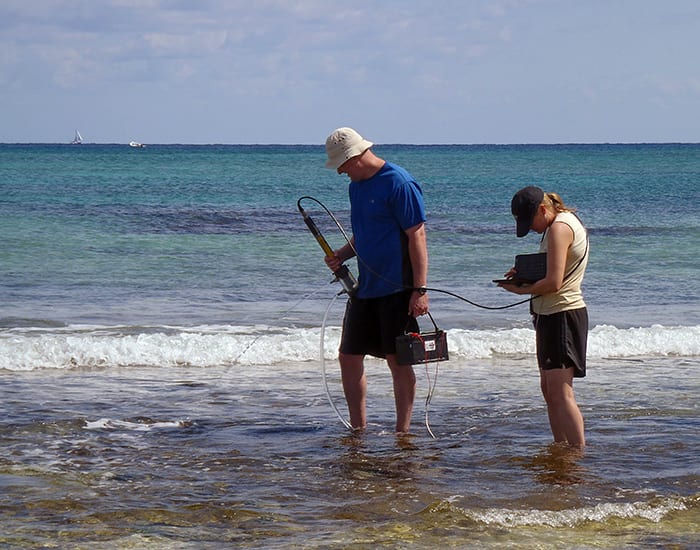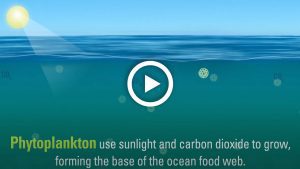WHOI researcher Paul Henderson and MIT/WHOI Joint Program student Meagan Gonneea pump water from holes that extend a meter or more into a rock outcrop beneath the subtidal zone along a beach in Akumal, Mexico. The bedrock of the Yucatan Peninsula is primarily limestone, or calcium carbonate. When terrestrial groundwater, which is fresh, seeps into and mixes with seawater, it becomes corrosive to calcium carbonate. Over time, pockets of limestone have dissolved away, leaving large holes throughout the region. Henderson and Gonneea gathered samples to measuring salinity in some of the holes as part of a study of groundwater flow into the coastal ocean. (Photo by Matt Charette, Woods Hole Oceanographic Institution)
Image and Visual Licensing
WHOI copyright digital assets (stills and video) contained on this website can be licensed for non-commercial use upon request and approval. Please contact WHOI Digital Assets at images@whoi.edu or (508) 289-2647.









